Speak to us
For any enquiries, please call us at any of our clinics.
Orchard
Farrer Park

Piles (also known as haemorrhoids) are characterised by pain and a sensation of a lump in the anal region, as well as bleeding during bowel movement. Caused by excessive pressure (e.g. constipation, pregnancy, chronic diarrhoea), piles are enlarged blood vessels that can be found in or around the anus and rectum.
WHY ARE PREGNANCY & CHILDBIRTH RISK FACTORS FOR PILES?
- As the unborn baby grows, the woman’s uterus gets bigger and begins to press against her pelvis. This growth puts a lot of pressure on the veins near her anus and rectum, causing these veins to become painful and swollen as a result.
- The increase in progesterone during pregnancy can also contribute to the development of haemorrhoids, as it relaxes the walls of the woman’s veins, making them more prone to swelling. An increase in blood volume, which enlarges veins, can also contribute to haemorrhoids during pregnancy. The hormones also slow down movement in the digestive tract, making constipation more likely, which is a risk factor for developing piles.
- Taking supplements such as iron can increase the risk of constipation, leading to increased straining during bowel movements.
- Constipation also develops more frequently in pregnant women as they tend to walk less due to the heavier weight.
PREVENTING HAEMORRHOIDS DURING PREGNANCY
Avoiding constipation is key to preventing haemorrhoids during pregnancy. Here are some tips for preventing constipation:
- Eat lots of high-fibre foods. There are plenty of good ways to incorporate more fibre into your diet. Fibre-filled foods include fruits like pears (especially when you include the skin), avocados, and berries; vegetables such as broccoli; whole grains such as oatmeal, brown rice, quinoa; legumes including various kinds of beans, lentils, and green peas; nuts and seeds.
- Drink plenty of fluids. The consumption of fibre must come hand in hand with adequate water intake. There is a tendency to drink less water as the pregnancy advances, due to the enlarged uterus constantly pressing against the bladder and creating an inconvenient situation of the woman having to go to the toilet frequently. Nonetheless, it is important to hydrate regularly.
- Use the toilet as soon as you feel the urge. Avoid going to the toilet out of habit; and one should visit the toilet once there is an urge to pass motion. "Holding it in" can contribute to constipation.
- Avoid sitting or standing for long periods of time. If you sit down at work, make sure to get up and walk around for a few minutes every hour. At home, try to rest on your side when reading or watching TV, to relieve downward pressure on your rectal veins.
- A stool softener may help. This can help if other methods fail to ease your constipation. Regular and routine using of laxative pills for constipation however is not recommended during pregnancy, as they can cause dehydration and might stimulate uterine contractions.
TREATING SYMPTOMATIC HAEMORRHOIDS DURING PREGNANCY
Haemorrhoids usually get better on their own after pregnancy. There are some measures that can be performed during pregnancy if piles become very symptomatic.
These are only recommended for piles that are protruding out and are very uncomfortable.
- Soak the rectal area in warm water several times a day. A sitz bath, or a small basin that fits over the toilet seat, can help. These can be purchased. Alternatively, you can also fill up a small basin with a few inches of warm water to create a similar effect, and soak inside for 15 to 20 minutes.
- Apply ice packs or cold compresses to the area several times a day. The cold can reduce swelling and help relieve pain.
- Keep the anus clean and dry. Try using moist towelettes or baby wipes to gently clean the area after bowel movements. This can be more gentle than dry toilet paper. Be sure to pat — not wipe — the area dry after bathing or making a bowel movement. Excess moisture can cause irritation.
- Medications: There are some medications that can be prescribed, such as Daflon. These are recommended only for a short course.
- Surgery: Surgery is usually the last resort for badly infected or thrombosed piles that may potentially cause harm to the patient. In selected cases, a minor procedure may be performed under local anaesthesia to remove blood clots in the piles.
TREATMENT OF PILES AFTER CHILDBIRTH
After a suitable period of time post-childbirth, there are ways to address the piles, especially if symptoms persist. We only recommend to do so when the woman has recovered from childbirth; typically after a few weeks or months.
If surgery is performed, there will be a period where breastfeeding is not recommended, as medications such as painkillers may be needed when recovering from any surgery.
Importantly, the doctor will evaluate her symptoms and a diagnostic colonoscopy may be required to ensure that there is no other pathology like colorectal cancer, which can present with similar symptoms.
Minimally Invasive Method:
- For bleeding piles that are relatively small with minimal protrusion, rubber band ligation can be performed. This method places a rubber band at the base of the pile, restricting its blood supply and causing the pile to shrink and disappear after a few days. This method is simple and the patient requires only 1-2 days of rest to recover.
Surgical Options:
In patients where conservative and minimally invasive methods prove to be insufficient, surgery (haemorrhoidectomy) may be recommended. This can be performed through the conventional method, stapled method, or new method known as laser haemorrhoidectomy.
- In the conventional method, piles and skin tags are effectively excised and removed. This method has been used for many years and is commonly performed and used for many types of haemorrhoids.
- In the stapled method, piles are removed through a circular stapling device without the need for an incision. There may be less post-operative discomfort resulting from this operation.
- In one of the newer methods, laser haemorrhoidectomy is performed where a small incision and insertion of a laser probe is inserted into the pile. This method is also effective with less post-operative discomfort.
KEY PUBLICATIONS:





